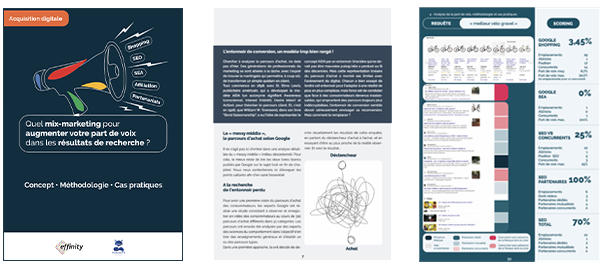In December 2013, the CNIL (Commission Nationale de l’Informatique et des Libertés) clarified the rules governing the use of cookies, particularly those used for advertising purposes. It recommends that sites, when a surfer arrives for the first time, display a banner indicating the purpose of the cookies used and offer the possibility, via a link, of refusing these cookies in full or in part. Advertising cookies are an integral part of content publishers’ remuneration. Their blocking by Internet users and browsers in fact leads to a significant drop in revenue, and thus undermines the free nature of these sites.
Native Fingerprint integration in our tracking tool
To anticipate the tightening of cookie regulations, we natively integrated the Fingerprint into our tracking tool in the summer of 2013. Today, all our customers benefit from it. And this new technique enables us to recover 5% of BtoC sales and 4% of leads generated in the BtoB sector, which would be lost if we relied solely on cookies.
Fingerprint identifies a unique Internet user up to 98% of the time
As a reminder, the tracking technique known as Fingerprint is based on the collection of information contained in the surfer’s web browser. As IP addresses are not sufficiently precise data (they are shared within companies), the principle consists in taking a fingerprint, made up of a synthesis of information (browser, platform, list of plug-ins, fonts, etc.) that enables us to identify a unique surfer at 98%. Fingerprinting enables a more detailed analysis of the surfer, but remains entirely anonymous. The aim is not to target the surfer, but to improve site performance, by linking a purchase to the viewing of a banner.
In addition to its value in preserving revenues for free sites, this tracking technique also serves as a performance indicator for editorial content. Fingerprinting makes it possible to link the reading of a sponsored blog post, for example, to a subsequent purchase made by an Internet user. Advertisers have a real ROI measurement tool at their disposal, by calculating the ratio between the cost of the article and the number of sales. Bloggers will be remunerated with a fixed amount, but advertisers will have a performance indicator that will let them know if their investment is profitable. This technique also eliminates the need for tracked links, which are not taken into account by Google. Untracked links from the blogger to the advertiser benefit the merchant’s SEO.
An infographic to help you understand the Fingerprint
And to avoid long speeches, we’ve put together an infographic to help you understand how the cookie and the Fingerprint complement each other.
Mis à jour le 23 January 2025
Mis à jour le 23 January 2025





